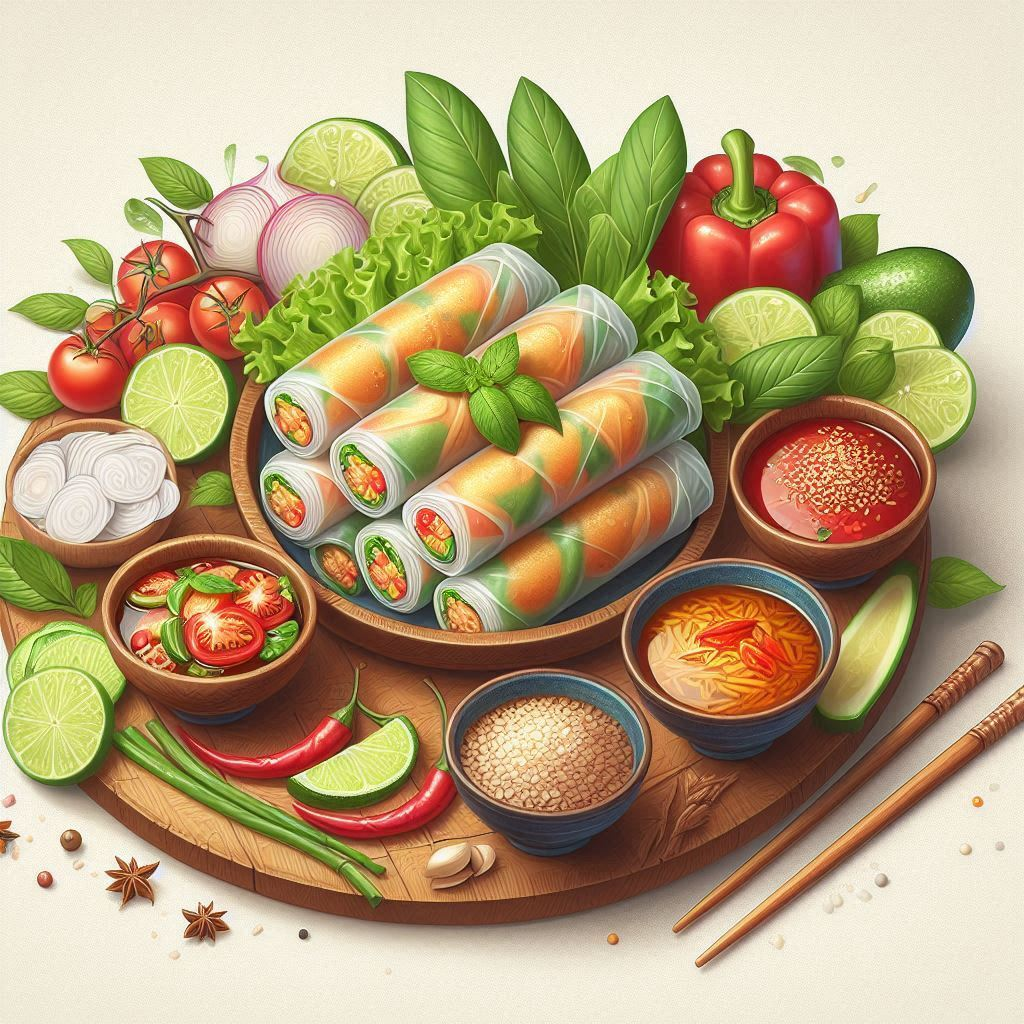
A Journey Through Time: Unraveling the History and Preparation of Vietnamese Spring Rolls
Vietnamese spring rolls, known as Gỏi cuốn in Vietnamese, are a culinary masterpiece that embodies the essence of Vietnamese cuisine. They are a testament to the country’s rich history, diverse influences, and meticulous approach to food preparation.
A Culinary Fusion:
The origins of spring rolls can be traced back to ancient China, where they were initially called “chun juan” and were filled with savory ingredients. These rolls were introduced to Vietnam during the 10th century by Chinese merchants and traders. Over time, Vietnamese cooks adapted the recipe to their own tastes and preferences, incorporating fresh, vibrant ingredients like rice paper, herbs, and dipping sauces.
The Evolution of Gỏi cuốn:
Vietnamese spring rolls have evolved significantly over the centuries. The traditional “Gỏi cuốn” features a transparent rice paper wrapper filled with a variety of ingredients, including fresh herbs, vermicelli noodles, pork, shrimp, and sometimes tofu. The filling is often marinated in a flavorful blend of fish sauce, lime juice, and garlic.
The Modern Gỏi cuốn:
Today, Vietnamese spring rolls are a beloved street food and a staple in Vietnamese restaurants worldwide. They are often served with a variety of dipping sauces, including nước chấm (fish sauce dipping sauce), peanut sauce, or a sweet and sour sauce. The modern version of Gỏi cuốn also includes vegetarian options, substituting the meat with tofu or other plant-based proteins.
The Art of Preparation:
The preparation of Gỏi cuốn is a meticulous process that requires patience and precision. Here’s a step-by-step guide to making these delicious rolls:
- Prepare the Filling: Start by preparing the filling ingredients. This includes cooking the pork or shrimp, soaking the vermicelli noodles, and chopping the fresh herbs.
- Soften the Rice Paper: Soak the rice paper in warm water for a few seconds until it becomes pliable.
- Assemble the Rolls: Place a sheet of softened rice paper on a flat surface. Arrange the filling ingredients in the center of the rice paper, leaving a small margin at the bottom.
- Roll the Spring Rolls: Fold the bottom edge of the rice paper over the filling. Then, fold in the sides and continue rolling tightly until you reach the top.
- Serve with Dipping Sauce: Serve the spring rolls with your preferred dipping sauce and enjoy!
A Culinary Symphony:
Vietnamese spring rolls are a testament to the harmonious blend of flavors and textures. The crispness of the rice paper, the freshness of the herbs, the savory flavors of the meat and noodles, and the tangy sweetness of the dipping sauces create a symphony of taste that is both satisfying and refreshing.
Beyond the Plate:
Gỏi cuốn is more than just a delicious dish; it’s a symbol of Vietnamese culture and hospitality. These rolls are often served at family gatherings, celebrations, and special occasions. They are a reminder of the importance of community, sharing, and the joy of food.
In Conclusion:
Vietnamese spring rolls are a culinary treasure that has captivated taste buds worldwide. Their history is a testament to the cultural exchange and culinary innovation that has shaped Vietnamese cuisine. The meticulous preparation and harmonious blend of flavors make Gỏi cuốn a true masterpiece of Vietnamese gastronomy. So, next time you’re looking for a delicious and refreshing snack or appetizer, give Vietnamese spring rolls a try. You won’t be disappointed!



